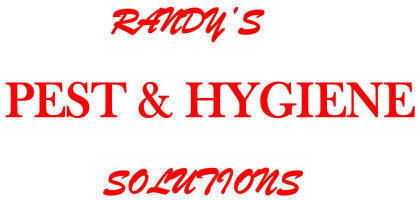 |
|
 |
DID YOU KNOW...
HOUSE MOUSE
A female house mouse can give birth to up to a dozen babies every three weeks. That’s 150 babies per year. House mice live in structures, but they can live outdoors. Even the smallest amount of mouse urine can trigger allergies, particularly in children because their immune are still developing. Mice spread disease through bite wounds and by contaminating food and water with their waste products. Mice can also spread disease through parasites, such as ticks, fleas and mites. These parasites bite the infected mouse and then spread the disease by biting humans.
COCKROACHES
As with many animals, cockroach reproduction relies on eggs from the female and sperm from a male. Most roaches are oviparous – their young grow in eggs outside of the mother’s body. The mother carries her around in a sac called an ootheca, which is attach to her abdomen. German cockroaches and her young can produce 300,000 more roaches in one year. An American cockroach and her young can produce 800 new roaches per year. Cockroaches’ eats garbage and waste, they can spread bacteria like “Salmonella” and “Shigella” everywhere they move. They also leave trails of faecal matter which they use to find their way around your home. The proteins in cockroach saliva and waste can also cause allergies and aggravate asthma. Since roaches are nocturnal, many people do not notice their presence until there are so many that they’ve run out of places to hide.
RATS
NORWAY RAT
The Norway rat is also called a “sewer rat”. They are larger, bigger and more aggressive to animals, humans and each other in comparison to Roof rats. Norway rats invade buildings (basement or ground floor), live in fields, farms and woodpiles. Their nests are lined with paper or cloth.
ROOF RAT
Roof rats are excellent climbers and they usually live in spaces on the top of buildings, on roofs or in attics. They also live in sheds, garages, boxes, ceilings, under floors, in wood heaps and in thick grass.
DAMAGE CAUSED BY RATS
Rats chew on material, urinate on food and eat stored foods. They chew on wires, which can cause fires. They also carry disease.
ANTS
Ants that commonly invade homes are odorous house ants, Argentine ant, Pharaoh ants and a few others. Ants generally do not cause damage and pose no particular health risk. Ants are attracted to a variety of food types including carbohydrates (sugars), proteins (meats), fats and oils.
HOW CAN U REDUCE ANTS AT YOUR HOME?
Sanitation – Clean up crumbs, cooking oil and all other sources of water. Patch holes around pipes and wires that pass into your home.
BED BUGS AND FLEAS
HOW DO YOU KNOW THE DIFFERENCE?
Effects
Bed Bugs
Fleas
Appearance
Small, flat, reddish - brown
Small, long red or brown
Disease
Do not spread disease
Can spread disease
Reaction to bites
Don’t hurt, itchy and rash
Can be felt and swelling
Identification
Dark spots/rusty on sheet, eggs
Visible on pets
Location
Cracks in bed frame and mattress
On pets and upholstery
Treatment
Heat clothing and infested areas. Pesticides
Vacuum upholstery, beat rugs outside, treat pets
Prevention
Reduce clutter, use protective casing on mattress
Wash pet bedding each week. Vacuum daily
HEALTH EFFECTS (BED BUGS AND FLEAS)
Bed bugs bites (cimicosis) can cause itchiness, skin rashes and blisters. Scratching can lead to secondary infection.
Flea bites are very itchy and annoying. Flea bites generally result in the formation of a slightly raised, swollen itching spot with a single puncture point at the centre (similar to a mosquito bite). Fleas can also lead to hair loss as a result of frequent scratching and biting by the animal, which could cause anaemia in extreme cases.